

Functional Behavioral Assessment Tim Lewis. Proven steps to a better classroom. PasifikaEdPlan2013To2017V2. PEPImplementationPlan20132017V2. Culturally responsive teaching for pasifika students. Pasifika Education Plan 2013-2017. 10 things you need to know about Pasifika peoples in Aotearoa (dispelling some common myths about the Pacific) ITL Research. Dyslexia Awareness Week 2018: Why we should teach all pupils as if they have dyslexia. Huge advancements have been made in education around the teaching of pupils with dyslexia.
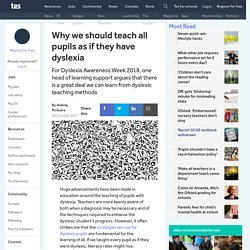
Teachers are more keenly aware of both when a diagnosis may be necessary and of the techniques required to enhance the dyslexic student’s progress. LearningEmotions. Aiming for Discipline Instead of Punishment. With our most difficult students, the current way schools try to discipline students does not change their behavior, and often it escalates the problems. Discipline, unlike punishment, is proactive and begins before there are problems. It means seeing conflict as an opportunity to problem solve. Discipline provides guidance, focuses on prevention, enhances communication, models respect, and embraces natural consequences. It teaches fairness, responsibility, life skills, and problem solving. There are times when students need to be removed from the classroom and school for aggressive, volatile actions, but upon re-entry we should make a plan of action that begins to address these actions in these brain-aligned ways.
The neurobiological changes caused by chronic negative experiences and a history of adversity can trigger a fear response in the brain. Once in a Lifetime.
Rule of Three and other ideas. And other handy thoughts: so many folks have asked me for a "quick start" set of rules for the design of 3rd Millennium learning spaces... ... this Rule of Three section and some of the other ideas here (see top of this page), have all been well received in conferences, seminars and most importantly adopted / shared with success by practitioners.
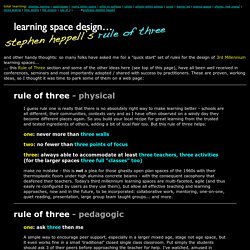
These are proven, working ideas, so I thought it was time to park some of them on a web page: I guess rule one is really that there is no absolutely right way to make learning better - schools are all different, their communities, contexts vary and as I have often observed on a windy day they become different places again. So you build your local recipe for great learning from the trusted and tested ingredients of others, adding a bit of local flair too. Some schools adopting Bring Your Own Device (BYOD), or more recently Use My Own Device (UMOD - somehow, bringing them wasn't enough!)
Your browser isn't supported. Te Puutake o Aoraki Maintaining a reflective practice portfolio. Www.forbes. Aimee Mullins: The opportunity of adversity. We're More Alike Than Different. Finding my strengths. Humans of Hendo. An outstanding creative project, which used a mix of photography, storytelling and youth leadership to connect young people with their community, celebrated with an exhibition of work and a book launch at the Corbans Estate Community Arts Centre in May.
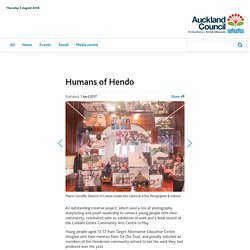
Young people aged 13-17 from Target Alternative Education Centre mingled with their mentors from Toi Ora Trust, and proudly watched as members of the Henderson community arrived to see the work they had produced over the year. Guy Claxton: What's the point of school? For the past year I've been pushing educators we've been working with on The Design Thinking School to get a copy of Prof Guy Claxton's book, What's The Point of School.
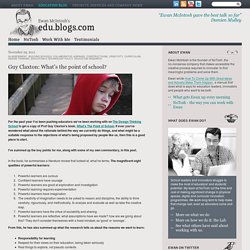
If ever you've wondered what about the rationale behind the way we currently do things, and what might be a suitable response to the objections of what's being proposed by people like us, then this is a good place to start. Leading and learning. 2b WTPOS outline. RSA Animate - Changing Education Paradigms. ATC21S Overview of Collaborative Problem Solving Tasks - Short. Industrial Age Education Is a Disservice to Students.
Both of my parents are educators, and from my travels around the world, there is a clear understanding that we need a major change in how we educate students.
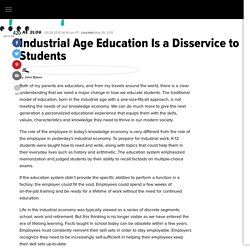
The traditional model of education, born in the industrial age with a one-size-fits-all approach, is not meeting the needs of our knowledge economy. We can do much more to give the next generation a personalized educational experience that equips them with the skills, values, characteristics and knowledge they need to thrive in our modern society. The role of the employee in today’s knowledge economy is very different from the role of the employee in yesterday’s industrial economy.
To prepare for industrial work, K-12 students were taught how to read and write, along with topics that could help them in their everyday lives such as history and arithmetic. The education system emphasized memorization and judged students by their ability to recall factoids on multiple-choice exams. Support material / PB4L School-Wide / Welcome - Positive Behaviour for Learning. The interactive PDFs below will allow you to create and complete your own electronic versions of activities, forms, and checklists from the manual.
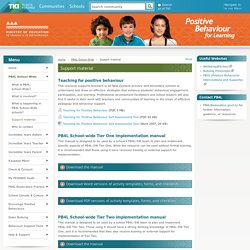
Type into the fillable fields (which are coloured on screen but print as they appear in the manual), and then save the document as a record, to work on in the future, or to email to others. Print the documents for hard copy records of what you’ve typed or if you would prefer to create handwritten versions. (Note that three of the PDFs have a mixture of portrait and landscape pages. To ensure these print properly, set ‘Orientation’ to ‘Auto portrait/landscape’ in the print dialogue box.) Section 2 – Working in teams Section 2.2 functions activity template (PB4L-SW Tier 2 manual) (PDF, 32 KB) Section 2.2 planning comms activity template (PB4L-SW Tier 2 manual) (PDF, 29 KB)